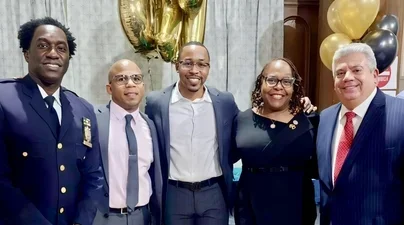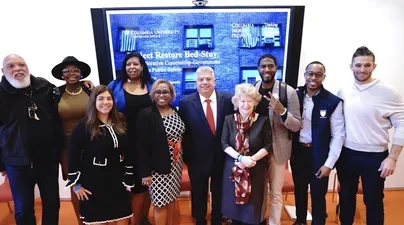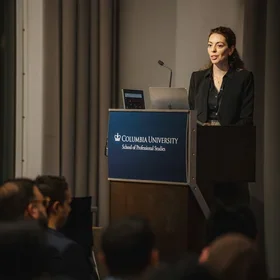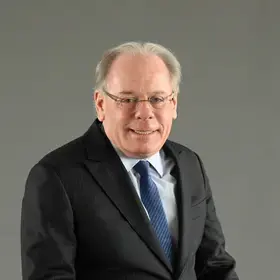By Peter Dixon, Associate Professor of Practice in the M.S. in Negotiation and Conflict Resolution program, School of Professional Studies
In 2013, the NYPD declared a reform victory, trading its unconstitutional dragnet “stop-and-frisk” policy for more targeted “precision policing.” But while the metaphor changed—from trawling for criminal elements to surgically removing them through gang and “street crew” takedowns—the framing did not: Criminal offenders are framed as wrongdoers who must be removed from society. This is flawed. It obscures both the underlying conditions that drive young people into street life and the potential of street crews to actually build peace.
Street crews are small and loosely organized groups of young people based around specific neighborhoods, streets, or housing developments, often with links to larger and more hierarchically organized gangs. My colleagues and I recently wrote about Project Restore, a successful community-based violence intervention from Columbia University’s Center for Justice, for the Salzburg Global project on Rethinking Youth Safety. With support from the Brooklyn District Attorney, Project Restore provides holistic support to help street-crew-involved youth transform themselves and their communities.
Instead of a net or a scalpel, it offers a bridge, connecting youth to services, to healing, to one another, and to their communities—and framing crew members not as criminals but as potential community assets. Theories from conflict resolution help explain why this is so powerful.

Left to right: New York City Police Department Captain Derby St. Fort; Dominic J. Dupont, Project Restore mentor/facilitator; Jarrell E. Daniels, project director at Columbia University’s Center for Justice; Assembly Member Stefani L. Zinerman, Brooklyn District Attorney Eric Gonzalez
Street Crews and Local Capacities for Peace
In 1999, Mary Anderson published Do No Harm as an exploration of why international aid often fails and frequently makes things worse. Her answer, similar to others’, was that interventions designed by outsiders too often fail to account for two key local dynamics: dividers and connectors. Dividers are sources of tension and separation, including social cleavages, institutionalized inequalities, and identity-based fault lines that reproduce and escalate conflict. In the context of NYC gang violence, these include historical grievances between crews, poverty and racism, and mistrust of the police and other state authorities. Connectors, on the other hand, are sources of connection across division, including shared spaces, institutions, norms, and networks: things like community centers, block parties, and, under the right conditions, street crews themselves. To Anderson, dividers and connectors were the missing pieces of the puzzle in international aid. Without understanding what they are and how they work—and investing in them—aid would always fail to build sustainable peace.
Why, then, are street crews sources of both violence and potential capacities for peace? And what does that mean for violence intervention design? What the team behind Project Restore saw was that street crews are not inherently criminal. Rather, crews are social networks that form in response to conditions of deprivation. They offer belonging, safety, opportunity, and identity to youth who are unable to fulfill these needs elsewhere—that is, they are sources of much-needed connection. The rivalries that erupt and escalate between them are real, but they are not necessarily rooted in some kind of rational planning, self-interest, or criminal motive. Instead, they are often inherited, passed down through generations as mythologies of difference and hatred and fueled by disinvestment. The dividers, then, are not the crews themselves but the symbols, narratives, and conditions that push them toward violence.
The NYPD’s precision policing, which uses surveillance, arrest, and incarceration to remove street crew members from communities, falls into the trap that Anderson warned about in 1999: misunderstanding and exacerbating the dividers that underlie street rivalries and undermining potential connectors, exposing young people of color to more aggressive policing and further disenfranchising their communities. As such, precision policing does not provide a sustainable solution to the cycle of retaliatory violence: incarcerate one cohort of leadership, and the next generation is ready to inherit the conflict and fill the vacuum.

Left to right: James Mcleary, Dr. UniQue Starks, Jeannie Lopez, Oma Holloway, Deanna Logan, Eric Gonzalez, Brooklyn District Attorney, Dr. Geraldine Downey, Jumaane Williams, NYC Public Advocate, Jarrell Daniels & Gabriel Feldman
With a different framing of street crew membership, Project Restore offers a strengths-based model that flips the script from punishment to investment. Through holistic, intensive, and tailored programming, it addresses the unmet needs of young people who are street-involved, not as a magic bullet but as a foundation for personal and social transformation. By investing in these youth, the project has already demonstrated impressive results in the neighborhood of Bedford-Stuyvesant, Brooklyn, where it helped 30 young men find jobs, enroll in college, and reconcile an entrenched rivalry between their crews that had been driving gun violence for years. After one year, the project reduced gun violence by 28 percent, not by breaking apart networks but by transforming them.
These young men even formed their own “Public Safety Working Group” to address neighborhood conflicts before they erupt into violence. This is the essence of a local capacity for peace: former rivals working together to improve their own lives and the neighborhood they share.
In our capstone series at the Negotiation and Conflict Resolution program, we ask students who are designing their own conflict resolution strategies to identify the local capacities for peace and demonstrate how their interventions will support them. To assess the potential for sustainability, we use social network analysis to look for bridges and connections that these interventions create across polarized networks. This is precisely what the Center for Justice and Project Restore accomplished. By framing street crews not as criminal groups but as social networks with the capacity to build peace, it invested in the very relationships that precision policing aims to destroy.
Views and opinions expressed here are those of the authors, and do not necessarily reflect the official position of Columbia School of Professional Studies or Columbia University.
About the Program
Columbia University’s Master of Science in Negotiation and Conflict Resolution prepares students to analyze the root causes and dynamics of conflict and to transform disputes through reasoned and resourceful interventions. The program focuses on developing self-awareness, tenacity, and interpersonal competency; building common ground; opening lines of communication; ensuring representation and recognition; and building sustainable possibilities for resolution.
The program has on-campus and online (with residency) modality options. Learn more about the M.S. in Negotiation and Conflict Resolution program here.



